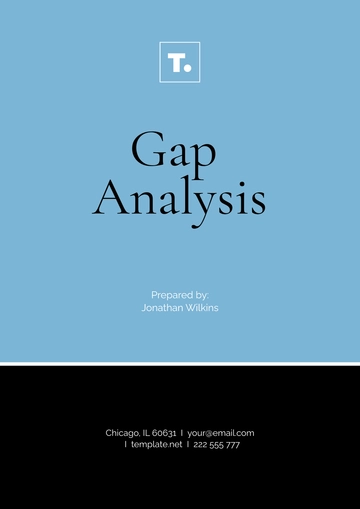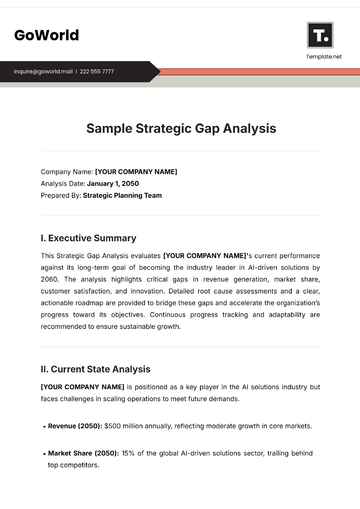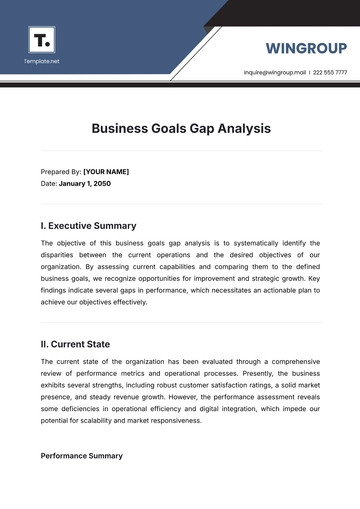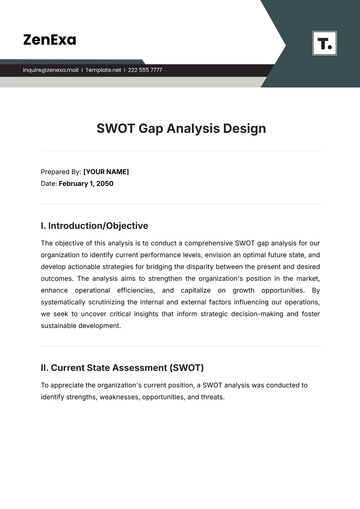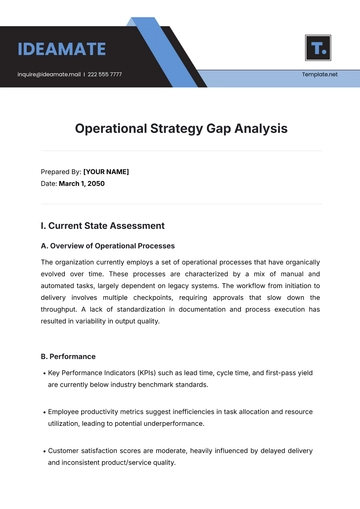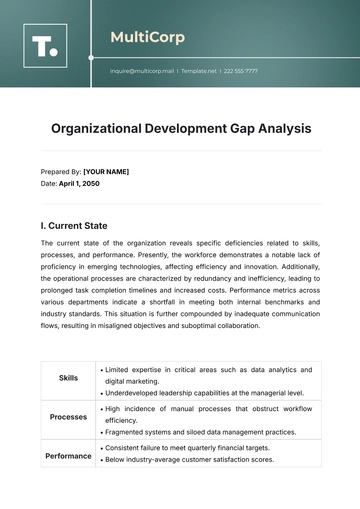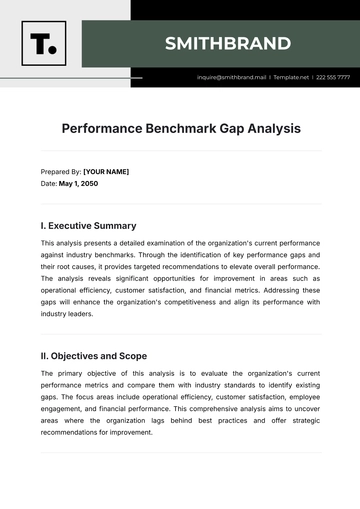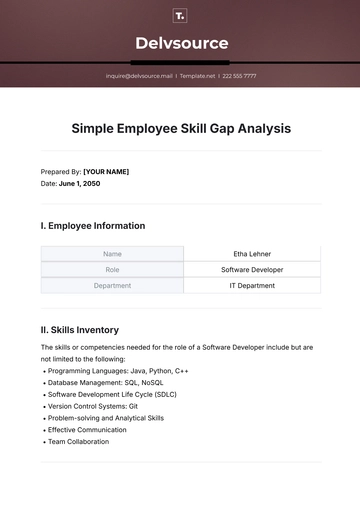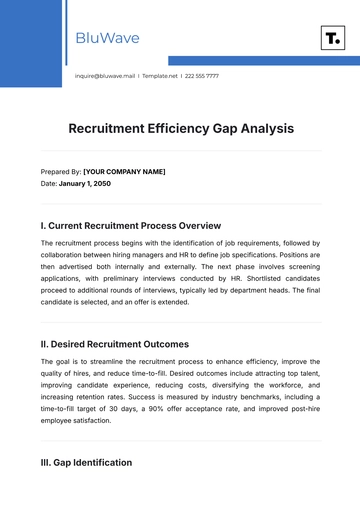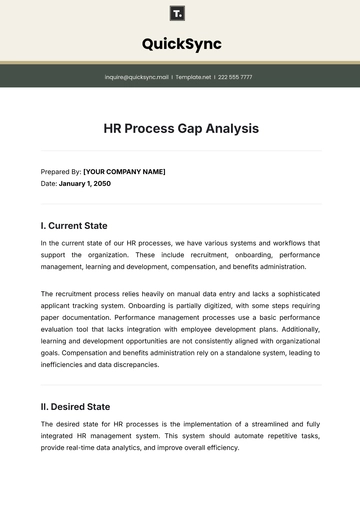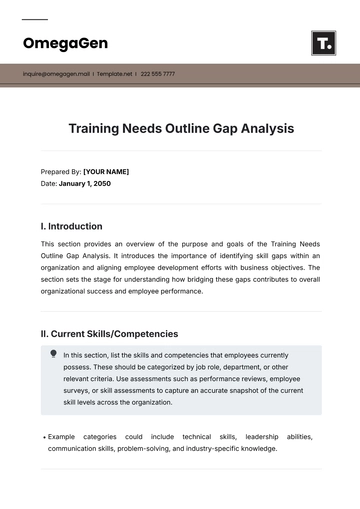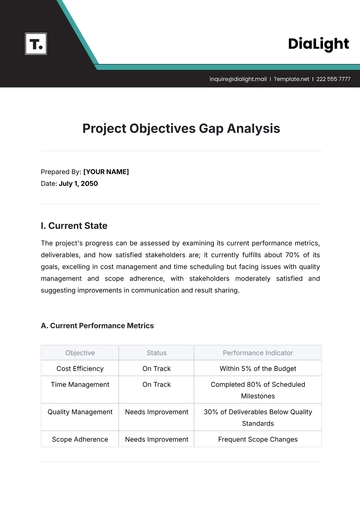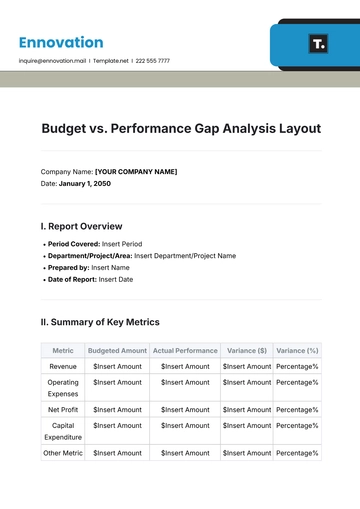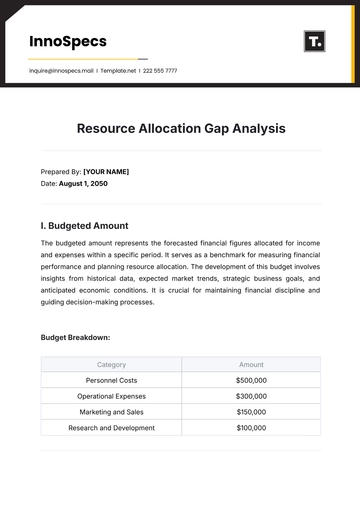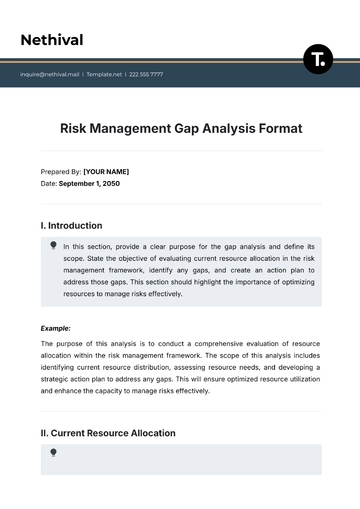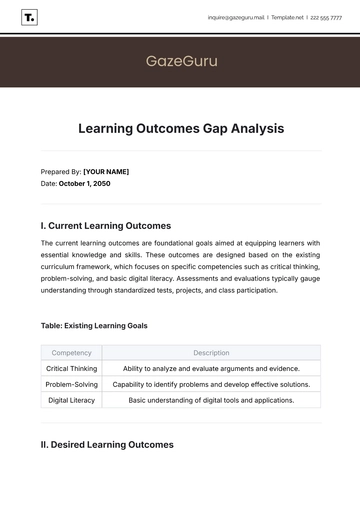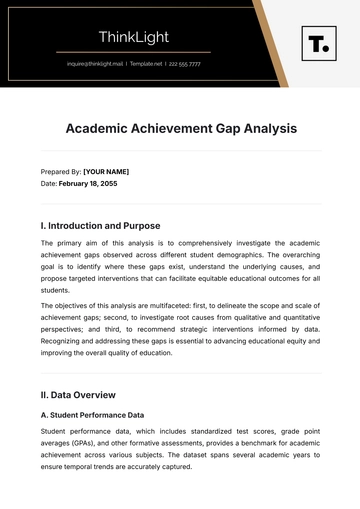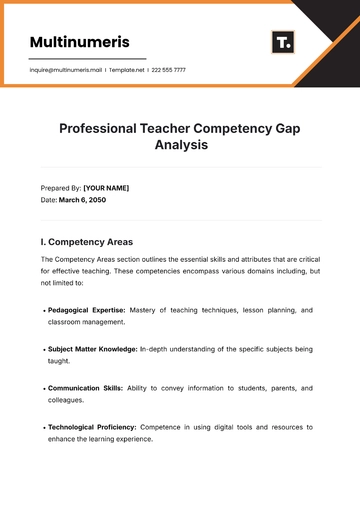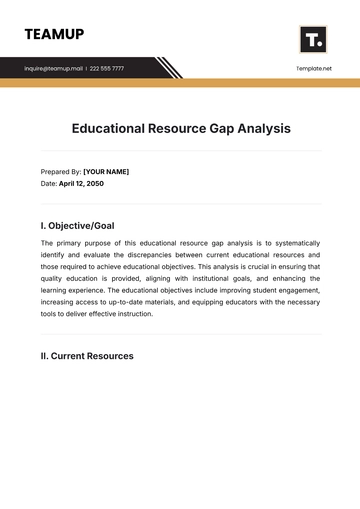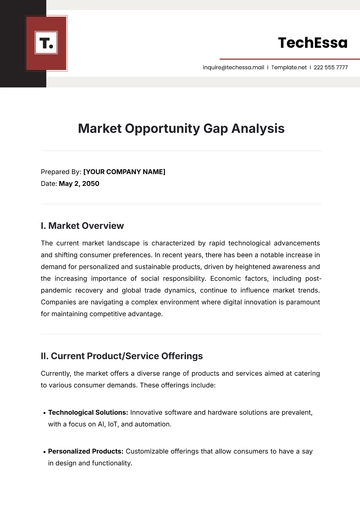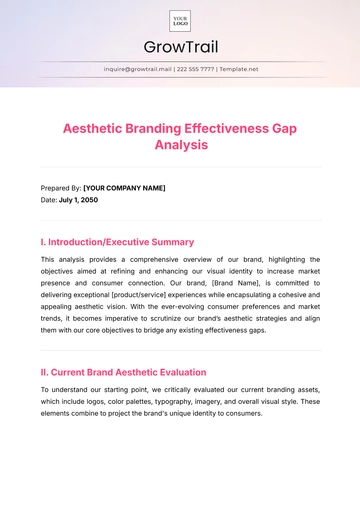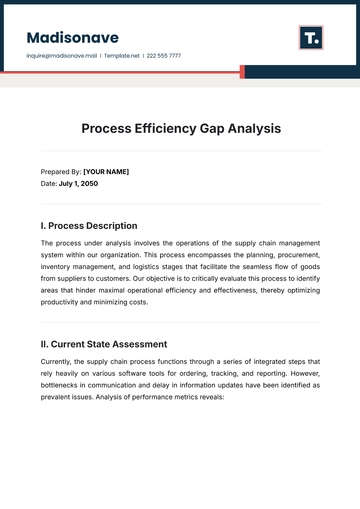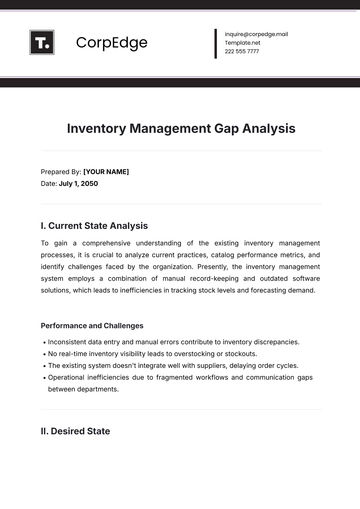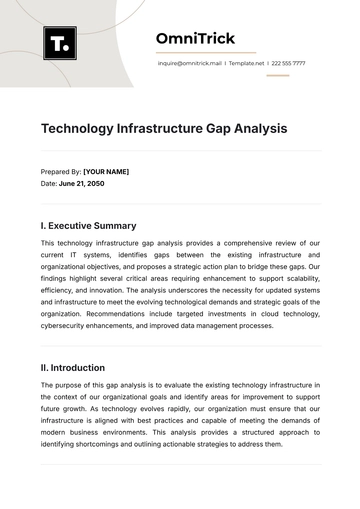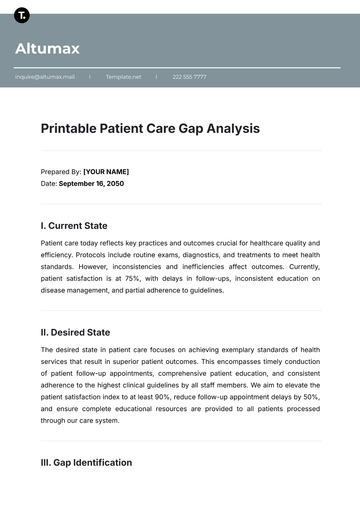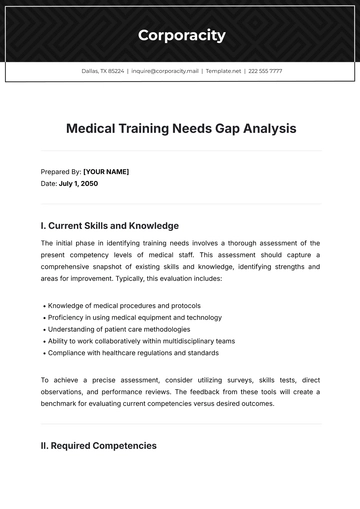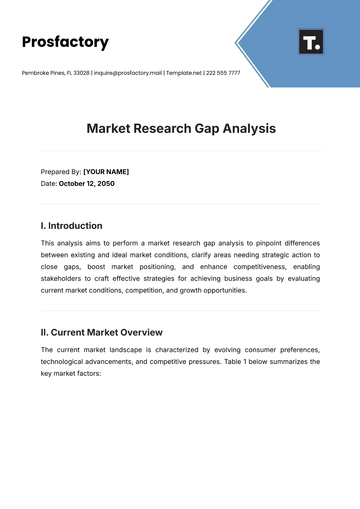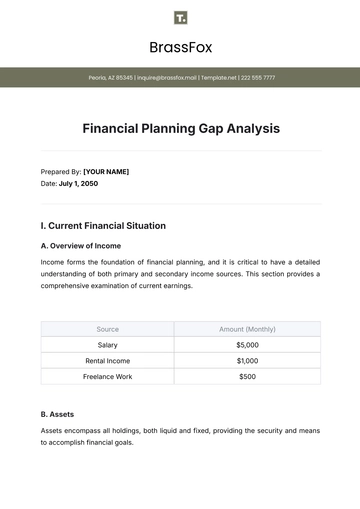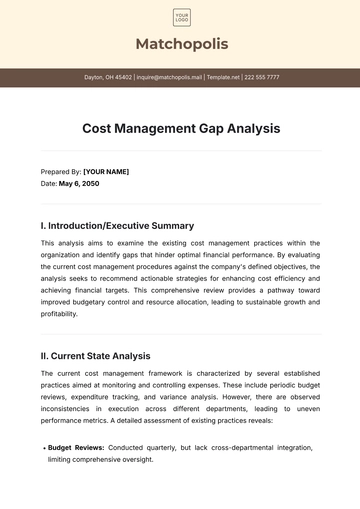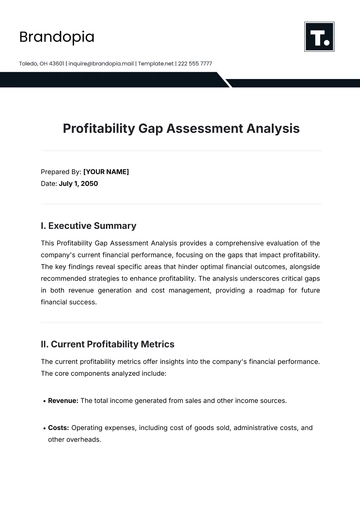Free Recruitment Efficiency Gap Analysis
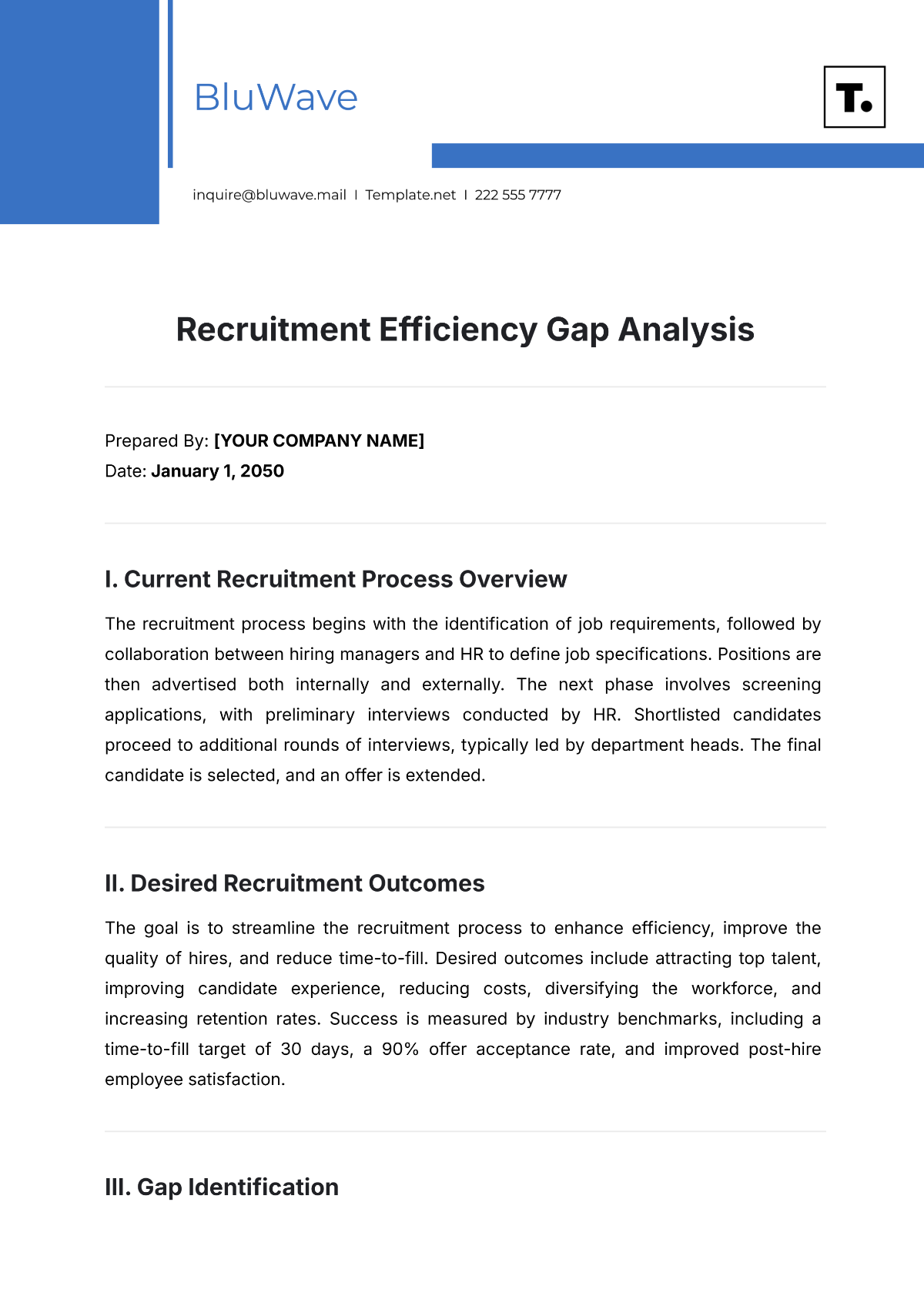
Prepared By: [YOUR COMPANY NAME]
Date: January 1, 2050
I. Current Recruitment Process Overview
The recruitment process begins with the identification of job requirements, followed by collaboration between hiring managers and HR to define job specifications. Positions are then advertised both internally and externally. The next phase involves screening applications, with preliminary interviews conducted by HR. Shortlisted candidates proceed to additional rounds of interviews, typically led by department heads. The final candidate is selected, and an offer is extended.
II. Desired Recruitment Outcomes
The goal is to streamline the recruitment process to enhance efficiency, improve the quality of hires, and reduce time-to-fill. Desired outcomes include attracting top talent, improving candidate experience, reducing costs, diversifying the workforce, and increasing retention rates. Success is measured by industry benchmarks, including a time-to-fill target of 30 days, a 90% offer acceptance rate, and improved post-hire employee satisfaction.
III. Gap Identification
Key gaps include:
Time-to-fill: The current average time it takes to fill the position is 45 days, which surpasses the established benchmark of 30 days.
Quality of hire: The feedback received highlights several discrepancies, specifically pointing out that there are mismatches in both the skills possessed by individuals and their compatibility with the cultural expectations and values of the organization.
Candidate experience: Feedback scores are poor due to inefficient communication and long response times.
IV. Root Cause Analysis
Key factors contributing to recruitment gaps include:
Lack of Integrated Recruitment Technologies: The absence of an Applicant Tracking System (ATS) results in manual processes, slow decision-making, and inconsistent data.
Understaffed HR Department: Insufficient HR personnel leads to increased workloads, slower response times, and delays in candidate evaluations.
Limited Focus on Diversity and Inclusion: A narrow recruitment strategy limits access to diverse talent, affecting both candidate engagement and company culture.
Inconsistent Communication Between HR and Hiring Managers: Poor communication leads to delays and missed opportunities, prolonging the hiring process.
V. Recommendations for Improvement
To address these issues:
Implement an ATS: Automate tasks like job postings, screenings, and interview scheduling to streamline the process and improve collaboration.
Invest in HR Training: Equip HR personnel with the skills to manage workloads effectively and assess candidates accurately.
Develop a Diversity and Inclusion Strategy: Broaden the talent pool by targeting underrepresented groups and fostering an inclusive workplace.
Enhance Communication Between HR and Hiring Managers: Establish clear communication channels to ensure timely decisions and reduce delays.
VI. Metrics and KPIs
Metric/KPI | Target |
|---|---|
Time-to-fill | 30 days |
Offer acceptance rate | 90% |
Candidate experience score | 80 out of 100 |
Quality of hire score | Above industry average |
Diversity hiring percentage | 30% of new hires |
VII. Action Plan and Timeline
A phased approach is recommended for the implementation of these improvements. In the first quarter, prioritize the procurement and deployment of the Applicant Tracking System (ATS) while simultaneously establishing enhanced communication protocols. Concurrently, initiate training sessions for HR personnel to improve overall recruitment handling.
In the second quarter, develop and launch the diversity and inclusion strategy, with a focus on expanding the talent pool. By the third quarter, evaluate progress against the established KPIs, recalibrating strategies as necessary to ensure alignment with desired recruitment outcomes. Regular quarterly reviews will ensure sustained progress and adaptability to any evolving challenges.
- 100% Customizable, free editor
- Access 1 Million+ Templates, photo’s & graphics
- Download or share as a template
- Click and replace photos, graphics, text, backgrounds
- Resize, crop, AI write & more
- Access advanced editor
Streamline hiring processes with the Recruitment Efficiency Gap Analysis Template from Template.net. This editable and customizable template is tailored for HR professionals aiming to improve recruitment strategies. Editable in our AI Editor Tool, it provides a clear framework to identify inefficiencies and implement actionable improvements. Simplify your recruitment analysis and achieve better hiring outcomes with this professional template.
